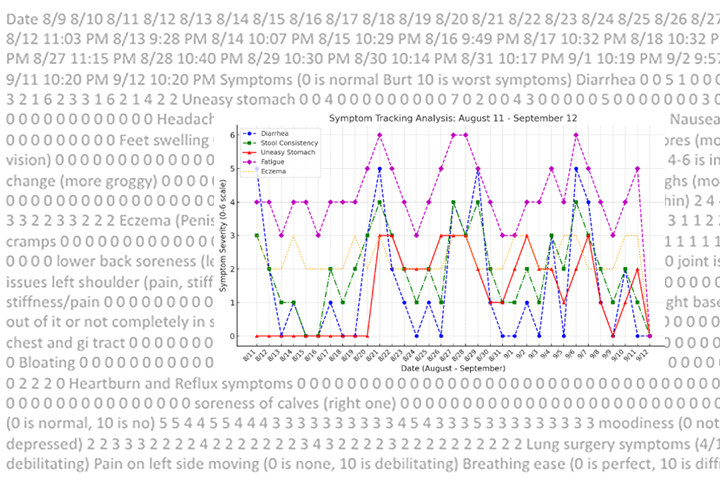Exercise Before, During, and After Pancreatic Cancer Treatment Could Save Your Life

Daniel Sone, National Cancer Institute
When you get a pancreatic cancer diagnosis, exercise is probably the last thing on your mind.
But there’s good evidence to suggest exercise should be part of your first line of defense. In fact, research suggests “prehabilitation”—conditioning your body prior to undergoing surgery or cancer treatment—could boost your odds of survival.
“When you have pancreatic cancer, exercise is a challenge, even more so than for patients with other types of cancer,” says Matthew Katz, M.D., Associate Professor of Surgical Oncology and Chief of Pancreas Surgery at the University of Texas MD Anderson Cancer Center in Houston, Texas.
Unlike breast or prostate cancer, the burden of pancreatic cancer can include complications, such as biliary obstructions, which can impact your ability to eat, gain weight, and, yes, exercise. And yet, patients in Katz’s clinic are exercising—and the outcomes of their efforts are inspiring.
The Perks of Exercise
Katz and his team have demonstrated that even patients with advanced disease are able to stick to a preoperative exercise program, and increased activity enhances patients’ quality and quantity of life. In a study of 20 patients with pancreatic cancer, 15 completed the exercise program—and the health status of all 15 continued at the same level.
Among other fitness perks:
- Enhanced drug delivery. Preclinical studies suggest that exercise remodels blood vessels, allowing for increased blood flow—and chemotherapy delivery—to cancerous tumors. Research also shows that patients who are involved in exercise programs experience fewer or less severe side effects of chemotherapy.
- Weight gain. Cancer releases compounds into the blood that break down muscle and fat, causing patients to lose weight and suffer from muscle atrophy. Exercise can help patients who are suffering from muscle loss gain weight by increasing appetite and building lean body mass.
- Energy. Fatigue plagues many cancer patients, whether they have pancreatic cancer or any other type. Studies consistently show people who engage in regular exercise experience 40 to 50 percent less fatigue over the course of treatment.
- Mental well-being. Perhaps one of the most important perks of exercise is improved mood. Some mental wellness experts use exercise as a prescription for managing anxiety and depression. Patients also gain a sense of empowerment. It gives them the sense that they’re participating in their own care.
Fitness Rx
While experts increasingly agree that exercise may be one of the most important things you can do before, during, and after cancer treatment, patients still hear they should “take it easy.”
“Historically, people have been told they shouldn’t exercise, or even that they should be bedridden,” says Katz. But he and his team are turning that advice upside down, with data suggesting that exercise before, during, and after treatment may produce dramatic benefits in both quality and quantity of life for pancreatic cancer patients.
The idea is to get patients exercising according to standard recommendations: 150 minutes of moderate to vigorous exercise each week and strengthening exercises two days each week. Katz’s team emphasizes these recommendations at every opportunity. “My clinic is completely different than it was just four years ago,” he notes. In fact, it looks a lot like a sophisticated gym. Pancreatic cancer patients wear fitness trackers and accelerometers while lifting weights, working with resistance bands, and walking on treadmills.
But you don’t need to get fancy—or go high-tech—to get the benefits. You can spend some time walking, gardening, or swimming in a pool. “This isn’t rocket science. The goal is simply to get patients moving,” says Katz.
Tips for Getting Started
If you’ve been inactive for weeks, or even your entire life, getting on board with a regular exercise program may seem like a pipe dream. But this news might help get you moving: Exercise not only improves emotional health and well-being, the latest research suggests it can reduce the side effects of treatment and even stave off recurrence.
To get started:
- Talk to your doctor. Certain medications can affect your heart rate, breathing, and your ability to exercise. And while starting a walking or strengthening program is generally harmless, you should be careful.
- Start slow. Instead of trying to exercise seven days a week, start slow. At first, you may only be able to handle a walk around the block, but over time, you’ll be able to add time and increase the pace.
- Go high-tech. Studies suggest wearable fitness trackers help exercisers stay motivated. Fitness apps can help you track your progress and make workouts more enjoyable.
No matter which approach you take, take your time, emphasize comfort, and keep your doctor up to date on your progress.






